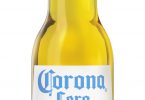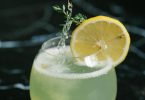Beer & the European Economy
The decline in beer consumption here appears to be tailing off, judging by the latest report from the European Brewing Association, The Contribution made by Beer to the European Economy.
While the study encompasses the brewing sector in 31 European countries, the consolidated data relate to the 27 EU Member States including Ireland.
It reports that output from Irish breweries was up 2.6 per cent in 2010 to 8.249 million hectolitres from 2009’s 8.042 million hl figure (‘though this figure was 9.1 per cent down on 2008’s 8.846 million hl figure).
Consumption
Consumption in 2010 totalled 4.814 million hl. The report indicates that at 4.855 million hectolitres, the sales decline in 2009 of 6.5 per cent (compared to 2008’s consumption figure of 5.193 million hectolitres) tailed off somewhat, down just 0.8 per cent from the 2009 figure. Since 2008 beer consumption here has declined by 7.3 per cent. This two-year decline in beer consumption compares with an 8.3 per cent average drop in consumption across the EU.
Today, Ireland’s per capita consumption hovers around the 90 litre mark, considerably down from 2007’s 106 litres.
Around 66 per cent of all beer sales take place in the on-trade. This means almost 3.2 million hl or €2.4 billion-worth of beer was sold via the on-trade but this figure is declining in favour of off-sales which are now responsible for estimated gross sales of €579 million or 1.6 million hl.
Employment
This drift to off-sales is worrying, for the Irish brewing sector directly employs 1,441 people and employment in the supply sector arising from beer production and sales is estimated at 5,880, while induced employment in the hospitality sector is put at around 35,700 with just over 1,500 involved in off-sales beer retailing. The report puts the total employment figure at 44,540, a decrease of 7,904 jobs (drained from the hospitality sector and in the beer industry itself) compared with 2008.
Furthermore, in terms of employment, 64 per cent of the economic impact of the Irish brewing sector on suppliers is concentrated in agriculture. Compared with other European countries this is rather high.
Agricultural goods account for around 21.5 per cent of the total amount spent by breweries which is slightly higher than in other European countries.
Major quantities (76 per cent) of hops and malt are purchased domestically whereas a large part of the money spent by brewing companies in other supplying sectors is for purchases abroad.
Competition
The report finds the Irish beer market to be mature and highly competitive with Diageo, the largest Irish brewery, enjoying a market share of over 50 per cent followed by Heineken Ireland with a 25 per cent share. Imported beer distributers and some 20 microbreweries divide up the remaining beer market between them.
While beer remains the most popular alcoholic beverage, consumption is shifting from beer to wine, notes the report.
State revenues
Another substantial direct effect of the brewing sector concerns taxes and excises paid by beer brewers and consumers.
At €320 million for excise, €524 million for VAT and €290 million in income-related contributions and taxes, the Exchequer’s tax take from beer has been put at €1.134 billion.
Income taxes and social security contributions paid by employees of the brewing sector add up to €12 million.
In light of these figures, the Irish Brewers Association has called for a 10 per cent reduction in excise duty on beer in this year’s Budget to help boost the sector and sustain jobs at a time when the market is declining.
Drinks Industry Ireland spoke with Stephen Lynam, Senior Executive with the IBA, about how the Government could make up the shortfall in Exchequer income that such an excise decrease might cause.
“The IBA believes such a reduction would simply be a continuation of the successful policy adopted by the Minister in his recent Jobs Initiative which saw a reduction in the bottom rate of VAT,” he stated, “He made this cut in order to reduce the cost of a number of tourism-related offerings including restaurant meals and hotel stays.?
“Food and drink is an important part of the tourist offering and potential visitors will consider it when they decide to come here or not.
“As beer is the most popular alcoholic beverage, a 10 per cent cut in beer duty would be beneficial in attracting tourists here. The knock-on impact on jobs and Government revenues is obvious. ?Further, such a move would make a night out in an Irish pub more attractive for tourists and locals alike. Pubs are hard-pressed at the moment and by making Irish beer that little more attractive in price the Minister would be encouraging people to spend their money in the employment-intensive hospitality industry. ?Higher beer consumption means more jobs in the domestic manufacturing sector and higher purchases from the domestic agriculture sector too.”








